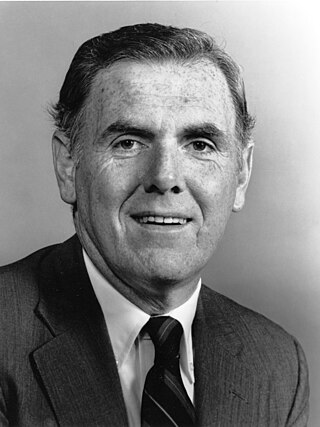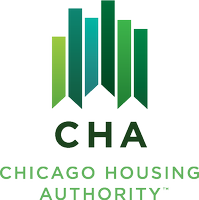
Raymond Leo Flynn is an American politician who served as the mayor of Boston, Massachusetts, from 1984 until 1993. He also served as United States Ambassador to the Holy See from 1993 to 1997.
Section 8 of the Housing Act of 1937, often called Section 8, as repeatedly amended, authorizes the payment of rental housing assistance to private landlords on behalf of low-income households in the United States. Fort Lauderdale, Florida Housing Authority Director William H. Lindsey, upon the advice of Housing Authority attorney J. Richard Smith, initially developed 11(b) financing in the early 1970s to accommodate a local savings and loan interested in assisting with urban renewal projects Lindsey eventually brought to fruition. This was the initial impetus for the subsequent development of the now well known Section 8 Program. 68% of total rental assistance in the United States goes to seniors, children, and those with disabilities. The U.S. Department of Housing and Urban Development manages Section 8 programs.

Arthur Christ Agnos is an American politician. He served as the 39th mayor of San Francisco, California from 1988 to 1992 and as the Regional Head of the United States Department of Housing and Urban Development from 1993 to 2001.

John Frederick Collins was an American lawyer who served as the mayor of Boston from 1960 to 1968. Collins was a lawyer who served in the Massachusetts Legislature from 1947 to 1955. He and his children caught polio during a 1955 outbreak. He was reliant on a wheelchair and crutches the rest of his life. After partially recovering, he ran for mayor in 1959 as an underdog. He successfully portrayed himself as outside corrupt "machine politics" and was elected.

The New York City Housing Authority (NYCHA) is a public development corporation which provides public housing in New York City, and is the largest public housing authority in North America. Created in 1934 as the first agency of its kind in the United States, it aims to provide decent, affordable housing for low- and moderate-income New Yorkers throughout the five boroughs of New York City. NYCHA also administers a citywide Section 8 Leased Housing Program in rental apartments. NYCHA developments include single and double family houses, apartment units, singular floors, and shared small building units, and commonly have large income disparities with their respective surrounding neighborhood or community. These developments, particularly those including large-scale apartment buildings, are often referred to in popular culture as "projects."
HOPE VI is a program of the United States Department of Housing and Urban Development. It is intended to revitalize the worst public housing projects in the United States into mixed-income developments. Its philosophy is largely based on New Urbanism and the concept of defensible space.

The West End is a neighborhood of Boston, Massachusetts, bounded generally by Cambridge Street to the south, the Charles River to the west and northwest, North Washington Street on the north and northeast, and New Sudbury Street on the east. Beacon Hill is to the south, North Point is across the Charles River to the north, Kendall Square is across the Charles River to the west, and the North End is to the east. A late 1950s urban renewal project razed a large Italian and Jewish enclave and displaced over 20,000 people in order to redevelop much of the West End and part of the neighboring Downtown neighborhood. After that, the original West End became increasingly non-residential, including part of Government Center as well as much of Massachusetts General Hospital and several high rise office buildings. More recently, however, new residential buildings and spaces, as well as new parks, have been appearing across the West End.

Back of the Hill station is a surface stop on the light rail MBTA Green Line E branch, located in the Mission Hill neighborhood of Boston, Massachusetts. It is named after, and primarily serves, the adjacent Back of the Hill apartment complex, a Section 8 development for elderly and disabled residents. Back of the Hill is located on the street running section of the E branch on South Huntington Avenue. The station has no platforms; passengers wait in bus shelters on the sidewalks and cross a traffic lane to reach Green Line trains.

Public housing in Puerto Rico is a subsidized system of housing units, mostly consisting of housing projects, which are provided for low-income families in Puerto Rico. The system is mainly financed with programs from the US Department of Housing and Urban Development (HUD) and the US Department of Agriculture USDA Rural Development. As of 2020, there were 325 public housing developments in Puerto Rico.

The Chicago Housing Authority (CHA) is a municipal corporation that oversees public housing within the city of Chicago. The agency's Board of Commissioners is appointed by the city's mayor, and has a budget independent from that of the city of Chicago. CHA is the largest rental landlord in Chicago, with more than 50,000 households. CHA owns over 21,000 apartments. It also oversees the administration of 37,000 Section 8 vouchers. The current acting CEO of the Chicago Housing Authority is Tracey Scott.

The Housing Act of 1937, formally the "United States Housing Act of 1937" and sometimes called the Wagner–Steagall Act, provided for subsidies to be paid from the United States federal government to local public housing agencies (LHAs) to improve living conditions for low-income families.

Columbia Point, in the Dorchester neighborhood of Boston, Massachusetts sits on a peninsula jutting out from the mainland of eastern Dorchester into the bay. Old Harbor Park is on the north side, adjacent to Old Harbor, part of Dorchester Bay. The peninsula is primarily occupied by Harbor Point, the University of Massachusetts Boston, the John F. Kennedy Presidential Library and Museum, the Edward M. Kennedy Institute for the United States Senate, and a complex at the former Bayside Expo Center, Boston College High School, and the Massachusetts Archives. The Boston Harborwalk follows the entire coastline.

Hazle Reid Crawford was an American real estate developer and Democratic politician in Washington, D.C.

In the United States, subsidized housing is administered by federal, state and local agencies to provide subsidized rental assistance for low-income households. Public housing is priced much below the market rate, allowing people to live in more convenient locations rather than move away from the city in search of lower rents. In most federally-funded rental assistance programs, the tenants' monthly rent is set at 30% of their household income. Now increasingly provided in a variety of settings and formats, originally public housing in the U.S. consisted primarily of one or more concentrated blocks of low-rise and/or high-rise apartment buildings. These complexes are operated by state and local housing authorities which are authorized and funded by the United States Department of Housing and Urban Development (HUD). In 2020, there were 1 million public housing units.
The D Street projects, built in 1949 as the West Broadway Housing Development, are a housing project located in South Boston, Massachusetts. The D Street projects stretch 4 city blocks from West Broadway to West Seventh street and 3 city blocks from B street to D street, forming a perfect square.
The Housing Authority of the City of Milwaukee (HACM) is a municipal agency of Milwaukee, Wisconsin dedicated to providing public housing and services for residents of the city of Milwaukee. The agency was established in 1944 and is responsible to a board of commissioners appointed by the mayor.

The District of Columbia Housing Authority is an independent government agency whose mission is to provide affordable housing to extremely low- through moderate-income households, foster sustainable communities, and cultivate opportunities for residents to improve their lives throughout the eight wards of Washington, D.C.

Doris Bunte was a Massachusetts state representative and an administrator of the Boston Housing Authority. She was the first African-American woman to hold either position.

The Holyoke Housing Authority (HHA) is a public agency of the city of Holyoke, Massachusetts that provides subsidized public housing to low- and moderate-income families and individuals.
The Troy Housing Authority (THA) is a public agency of the city of Troy, New York that provides subsidized public housing to low- and moderate-income families and individuals, and is the pass-through agency for funding from various housing-related federal programs.
















